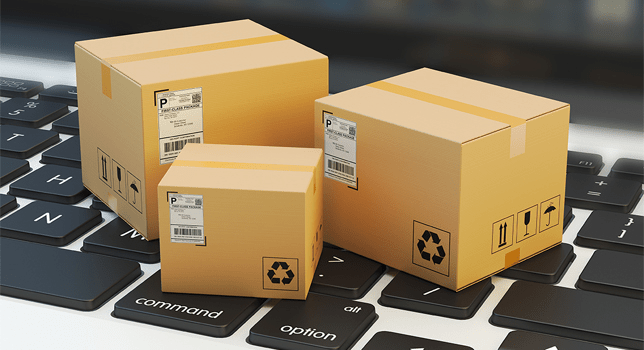As the societal restrictions resulting from COVID-19 broaden the consumer base using e-commerce, the retail landscape and shopper habits are being reshaped. A new study from Smithers, The
Future of E-commerce Packaging to 2025, outlines how these changes make e-commerce one of the most important and exciting market opportunities for packaging converters and material suppliers.
Smithers forecasts e-commerce packaging will reach a value of $51.7 billion in 2020 resulting from the COVID-19 lockdown and shop closures that have pushed more consumers online. Smithers’ data shows this projection represents an increase of $14.0 billion compared to the $33.7 billion market of 2019. Looking out over the forecast period, Smithers forecasts demand for e-commerce packaging will continue to boom at an accelerated compound annual growth rate (CAGR) of 17.0% to reach a value of $113.5 billion in 2025, making it over 10% of the total packaging market worldwide.
To keep pace with demand, more packaging companies are expected to develop solutions that are specifically geared towards e-commerce end-uses. In its new report, Smithers analyses e-commerce packaging by format, including corrugated board; flexible paper, plastics, and foil packaging; mailers; protective components); end-use application, and geographic market.
Through to 2025, all e-commerce packaging formats will see double digit CAGRs. Corrugated is the most valuable segment of the e-commerce packaging market. Its value will rise from $30.0 billion in 2019 to $41.6 billion in 2020 and is forecast to more than double again by 2025, making it the fastest growth of all e-commerce formats.
Market changes fuelling growth
The
Future of E-Commerce Packaging to 2025 identifies market changes that are fuelling future profitability for packaging suppliers and converters in e-commerce. For starters, the well-established e-commerce channels for clothing, fashion accessories and consumer electronics that existed in 2019 will broaden in 2020 to include e-commerce shipping of high volumes of groceries, sports equipment, cosmetics and personal care items. This expansion is requiring new packaging solutions that can protect goods in shipment, and provide a connection to the at-home consumer. To retain customers, reliability, speed of delivery and hassle-free returns are now leading priorities in online shopping. These requirements will influence e-commerce and omni-channel packaging in the future.
Customer experience
Delivery formats that enhance consumer experience are a major value-adding service for packaging suppliers and converters. This includes brand printed packaging; pre and post-ordering customised packs; and innovative designs that differentiate a product by giving it a unique ‘unboxing’ experience upon delivery. Sustainability is also important as a consumer concern. This is prompting the use of more custom designs that eliminate unnecessary protective packaging, and new material concepts, such as fully pulp-based, easy-to-recycle mailers.
Packaging designs for M-commerce and voice commerce
Existing e-commerce trade is being supplemented by subscription platforms, more mobile-based sales, and even voice ordering via software like Alexa. This is forcing brands to reconsider packaging designs to appeal to hold their appeal for customers even when seen on a tablet or smartphone screen.
Similarly, with the use of smart speakers, voice commerce is already impacting shopping habits. The number of global consumers using internet-enabled mobile devices to shop online continues to increase. Not only is shopping via a smart speaker quicker and more convenient than typing out search criteria on a keyboard or smartphone, but voice shopping can help to create a more personalised experience, such as issuing recommendations based on individual habits or preferences.
Regional consumption
When looking at global e-commerce by region, the Asia-Pacific, North America and Western Europe – account for over 90% of global market value. This is chiefly due to the existence in these parts of the world of large individual markets such as China and the US. E-commerce sales are skewed towards countries where internet and smartphone penetration are highest, although other factors such as population size, economic growth and the reliability of the postal system are also key drivers. Annual average expenditure on e-commerce also tends to be highest in the world’s more developed regions.
In the future, growth is likely to be highest in countries/regions where the e-commerce market is at an earlier stage of development, e.g. Africa, Middle East, parts of Asia and South/Central America.
Take a look inside
The
Future of E-commerce Packaging to 2025 is a definitive study of the e-commerce packaging industry. The aim of the report is to provide a comprehensive overview of the e-commerce packaging market, including current and future market size; to analyse trends within the market; and identify the key drivers and developments influencing the opportunities and future outlook of the e-commerce packaging market through to 2025 and beyond. The report includes a detailed analysis of the global e-commerce market, featuring internet/online shopping penetration, recent trends and ranking of key suppliers.
Find out more and download the brochure now >>
